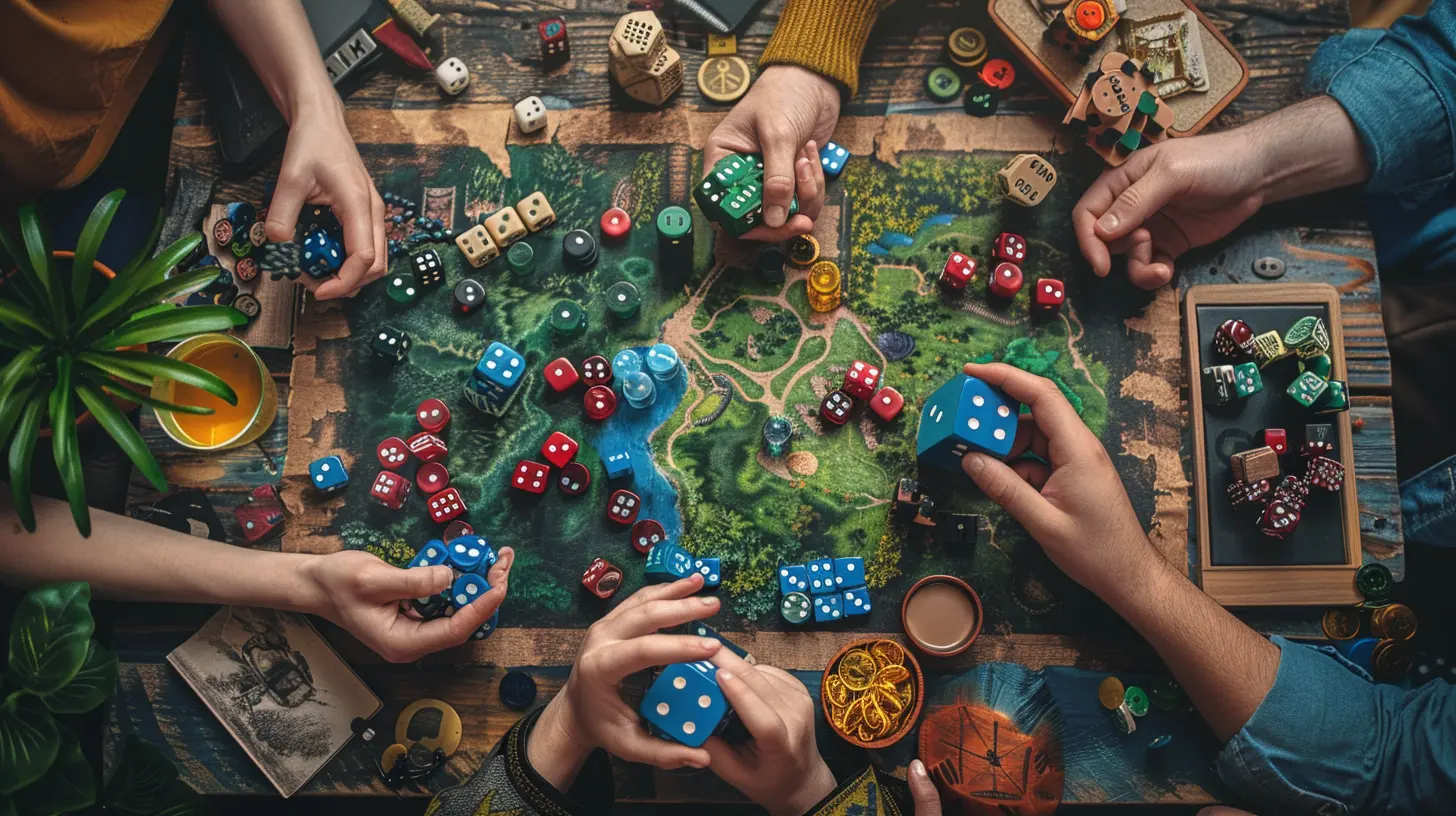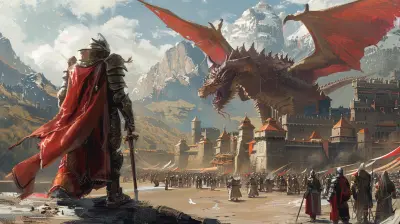Engaging Players with Meaningful Choices in Nonlinear Game Design
6 September 2025
Gaming has come a long way from the days of linear storylines and tightly-scripted gameplay. Today, one of the coolest and most immersive aspects you’ll find in modern titles is nonlinear game design—games that don't just hand-hold you down a single path, but instead toss you into a world where you're in the driver’s seat. But here’s the kicker: it’s not just about branching paths or open worlds. The real magic happens when players are offered meaningful choices.
So, what makes a choice in a game "meaningful"? Why do some decisions hit you right in the feels, while others fade away without a second thought? Let’s dig deep into the art—and science—of making player choices truly matter.
What Exactly Is Nonlinear Game Design?
Let's start with the basics. Nonlinear game design is all about breaking free from the straight line. Unlike traditional games where you go from point A to B to C, nonlinear games offer a web of possibilities. You might be able to explore different regions in any order, tackle quests in your own way, or even influence the storyline through your actions.But here’s the thing: nonlinearity alone doesn’t guarantee engagement.
A game can be nonlinear and still feel empty if players aren't being challenged to make decisions that affect the world around them. That’s where meaningful choices come in.
Meaningful Choices: Not Just Pick-A-or-B
A meaningful choice is one that has real consequences, both in terms of the story and gameplay. It’s the difference between choosing your favorite ice cream flavor and deciding whether to save a village or let it burn.Let me paint you a picture. Say you're playing an RPG where a local faction asks you to assassinate a corrupt noble. You can:
- Accept and risk political fallout.
- Refuse and lose favor with the faction.
- Find a third path—maybe expose the noble instead.
Each option leads to different outcomes: shifting alliances, access to new missions, or changes in how NPCs react to you. That’s meaningful.
Why Do Players Love Making Choices?
It all comes down to agency. Players want to feel like their actions matter. They don’t want to be passengers—they want to steer the ship. When a game lets you shape the outcome, it becomes your story, not just the developer’s story.Ever played a game where your choices actually changed the ending? That emotional payoff hits differently. Maybe a favorite character lived or died based on your call. Maybe a kingdom fell because you were too slow to act. Those are the moments you remember long after the credits roll.
Building Blocks of Meaningful Player Choices
Now let’s dive into how game designers pull this off. It’s not just about adding choices for the sake of it. It takes planning, writing chops, and a deep understanding of player psychology.1. Consequences That Stick
A choice without consequences is like pulling a fire alarm and nothing happening—you feel cheated. Players should see and feel the results of their choices, whether it’s immediate or years (in-game) down the line.Think of “The Witcher 3.” Choose to help a character in Act 1, and you might find them turning the tide of a major battle later. That’s the kind of long-term payoff that makes choices meaningful.
2. Moral Ambiguity
Black-and-white choices are boring. Real life is messy, and great games mirror that. When there’s no "right" answer, the player is forced to think deeply about their values.Take “Spec Ops: The Line.” The choices in this game are gut-wrenching, and intentionally so. It forces players to grapple with guilt, ethics, and unintended consequences. That’s powerful storytelling.
3. Choices That Affect Gameplay
It's not just story—choices should influence how the game plays. Maybe siding with one faction grants you unique gear or changes your available skills. Or maybe your choice sparks a new questline entirely.Games like “Deus Ex” and “Cyberpunk 2077” do this well. Your skills, dialogue choices, and paths you explore can dramatically shift how you approach objectives.
4. Emergent Outcomes
Sometimes, the best choices aren’t scripted—they’re emergent. In sandbox games like “Minecraft” or “RimWorld,” players create their own challenges and solutions. There’s no right or wrong answer, just dynamic systems reacting to player input. It’s chaotic, but incredibly rewarding.Common Pitfalls in Designing Player Choices
Let’s keep it real—not all "choices" are created equal. If a game flops on this part, players notice. Fast.1. The Illusion of Choice
This is the big one—offering fake choices that don’t change anything. Like when two dialogue options lead to the same response. Ugh. Players catch on quickly, and it breaks immersion.2. Too Many Insignificant Decisions
Paradoxically, more choice isn’t always better. If every moment is filled with decisions, it can actually reduce the perceived weight of each one. Quality trumps quantity.3. Player Fatigue
Constant decision-making can be exhausting. Not every moment needs to be a fork in the road. Balance is key—mix highs and lows, big choices and little ones.Nonlinear Doesn’t Mean Chaotic
Let’s talk structure for a sec. Nonlinear gameplay doesn’t have to mean a narrative free-for-all. Some of the best games use controlled nonlinearity—offering choices within a guided framework.Games like “Mass Effect” are a great example. You’re still on a kind of "rail," moving from mission to mission, but you’re making huge choices along the way. Who lives, who dies, what species thrives—those are up to you.
Tools and Techniques for Designers
If you’re on the dev side of things, how do you design these kinds of meaningful choices without writing a thousand branching scripts?Here are some battle-tested approaches:
1. Decision Trees Done Right
Use modular decision trees where each choice affects a set of variables. Instead of every choice spawning a new branch, some can tweak the same variables in subtle ways. Keeps things manageable.2. Narrative Flags
Set flags that track player decisions. Did they spare the bandit leader? That flag affects how other NPCs talk about you. It’s behind-the-scenes wizardry that keeps the world feeling alive.3. Dialogue Wheels and Tones
Games like “Dragon Age” use tones (sarcastic, aggressive, diplomatic) rather than exact words. This creates a sense of personality-driven choice, not just branching text.4. Player Feedback Loops
Show, don’t tell. Show players how their choices ripple through the world. Changed environments, NPC chatter, new dialogue trees—these are visual cues that their choices mattered.Great Examples of Meaningful Choices in Gaming
Let’s shout out a few games that absolutely nailed this:- Telltale’s The Walking Dead – Your choices evolve relationships and even determine who survives.
- Detroit: Become Human – Branching narratives with stunning consequences.
- Undertale – Playing pacifist or genocide routes offers vastly different experiences—all based on your moral compass.
- Baldur’s Gate 3 – D&D-inspired freedom, letting you solve problems creatively and watch the dominoes fall however they may.
Each of these games proves that when players are trusted with real agency, they dive deeper into the world.
The Future of Meaningful Choice
Looking ahead, meaningful choice is only going to become more important—and more complex.With the power of AI and procedural storytelling, we could see worlds that adapt in real-time to our choices. Imagine NPCs forming opinions over time, or entire economies reacting to your actions. The tech is evolving, and with it, the potential for truly personalized gaming experiences.
But no matter how advanced games get, the heart of meaningful choice remains the same: let players drive the story, make them care about the outcome, and never waste their trust with empty decisions.
Wrapping Up
Nonlinear game design with meaningful choices is more than just a trend—it’s a philosophy. It respects the player’s intelligence, rewards curiosity, and makes every playthrough feel personal.So next time you’re playing a game and you’re stuck in front of a tough decision, just remember: that’s where the magic is. That tension, that “what if,” that replayability—those are the ingredients that transform a good game into a legendary one.
And if you’re designing a game? Don’t just offer choices—make them matter.
all images in this post were generated using AI tools
Category:
Game DevelopmentAuthor:

Greyson McVeigh
Discussion
rate this article
1 comments
Phaedra McMillan
This article effectively highlights the importance of meaningful choices in nonlinear game design. It's refreshing to see a focus on player agency, as it genuinely enhances immersion and replayability. I appreciate the insights into balancing narrative and player freedom—crucial for a memorable gaming experience.
October 10, 2025 at 4:55 AM

Greyson McVeigh
Thank you for your thoughtful comment! I’m glad you found the insights on player agency and narrative balance valuable. Your feedback is much appreciated!


